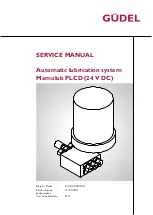
©
“WATEX” Ltd., Reg. Nr. 40003712811, Ganibu dambis 27 k-5, Riga, LV-1005; Contact information: tel. +371 67381989, e-mail:
[email protected], www.watex.eu
4
2.
SYSTEM COMPONENTS AND OPERATION
2.1. System components
The water filter system has three main components: filter material tank, control valve, and a reagent
tank. The filter tank is made of polyethylene and reinforced on the outside with a glass fiber winding
to maintain a pressure of up to 10 atm. Gravel fractions of different sizes are poured into the tank as
a support layer to prevent the filter material from entering the water supply system after the filter.
The lower part is specially designed gravel with a fraction size of 3 x 5 mm, followed by gravel with
a fraction size of 1 x 3 mm. During backwash, it serves to distribute the water stream evenly to
spread the filter material over the entire filter area. Ion exchange resin (cation exchange resin) is
used as the filter material for the softening plant.
There is also a collecting pipe in the tank, the bottom of which has a sieve with certain gaps to
prevent the filter material from entering the water supply system. The purified water is fed from the
bottom up to the control unit and then to the consumers.
2.1.1. Control valve
The equipment has a control valve screwed onto the filter tank, which controls the automatic
regeneration of the unit. The control unit is made of plastic alloy. The control panel is located at the
front and the connection points for the water supply, sewerage and reagent tank at the rear. The
operation of the control unit is ensured by the electrical voltage from the 220 V socket. The control
valve has a motherboard in which all parameters of the rinsing process are stored and regulated.
When the unit needs to be flushed, voltage is applied from the motherboard to the built-in motor,
which moves the cylindrical structure built into the unit to a certain position. The rinsing algorithm
of the device is based on the calendar principle, which is set by the user depending on the forecast


































